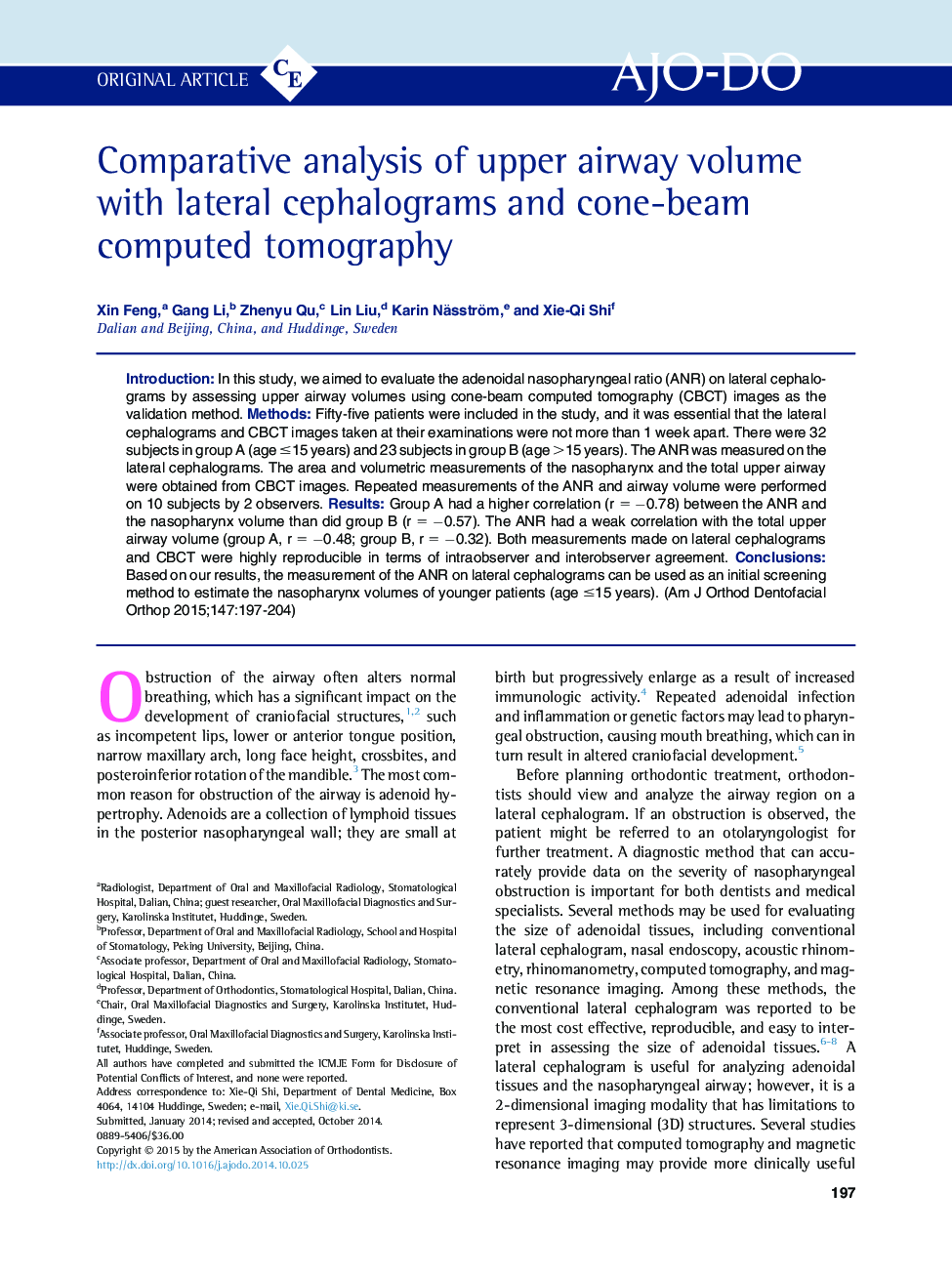| Article ID | Journal | Published Year | Pages | File Type |
|---|---|---|---|---|
| 3116079 | American Journal of Orthodontics and Dentofacial Orthopedics | 2015 | 8 Pages |
•The size of the adenoids has an important role in the evaluation of airway volume.•Adenoidal nasopharygeal ratio (ANR) can estimate nasopharyngeal volume (patients ≤ 15 years).•Other factors affect airway volume in addition to ANR values for older patients (>15 years).•CBCT examination should be recommended for evaluating the airway volume.
IntroductionIn this study, we aimed to evaluate the adenoidal nasopharyngeal ratio (ANR) on lateral cephalograms by assessing upper airway volumes using cone-beam computed tomography (CBCT) images as the validation method.MethodsFifty-five patients were included in the study, and it was essential that the lateral cephalograms and CBCT images taken at their examinations were not more than 1 week apart. There were 32 subjects in group A (age ≤15 years) and 23 subjects in group B (age >15 years). The ANR was measured on the lateral cephalograms. The area and volumetric measurements of the nasopharynx and the total upper airway were obtained from CBCT images. Repeated measurements of the ANR and airway volume were performed on 10 subjects by 2 observers.ResultsGroup A had a higher correlation (r = −0.78) between the ANR and the nasopharynx volume than did group B (r = −0.57). The ANR had a weak correlation with the total upper airway volume (group A, r = −0.48; group B, r = −0.32). Both measurements made on lateral cephalograms and CBCT were highly reproducible in terms of intraobserver and interobserver agreement.ConclusionsBased on our results, the measurement of the ANR on lateral cephalograms can be used as an initial screening method to estimate the nasopharynx volumes of younger patients (age ≤15 years).
